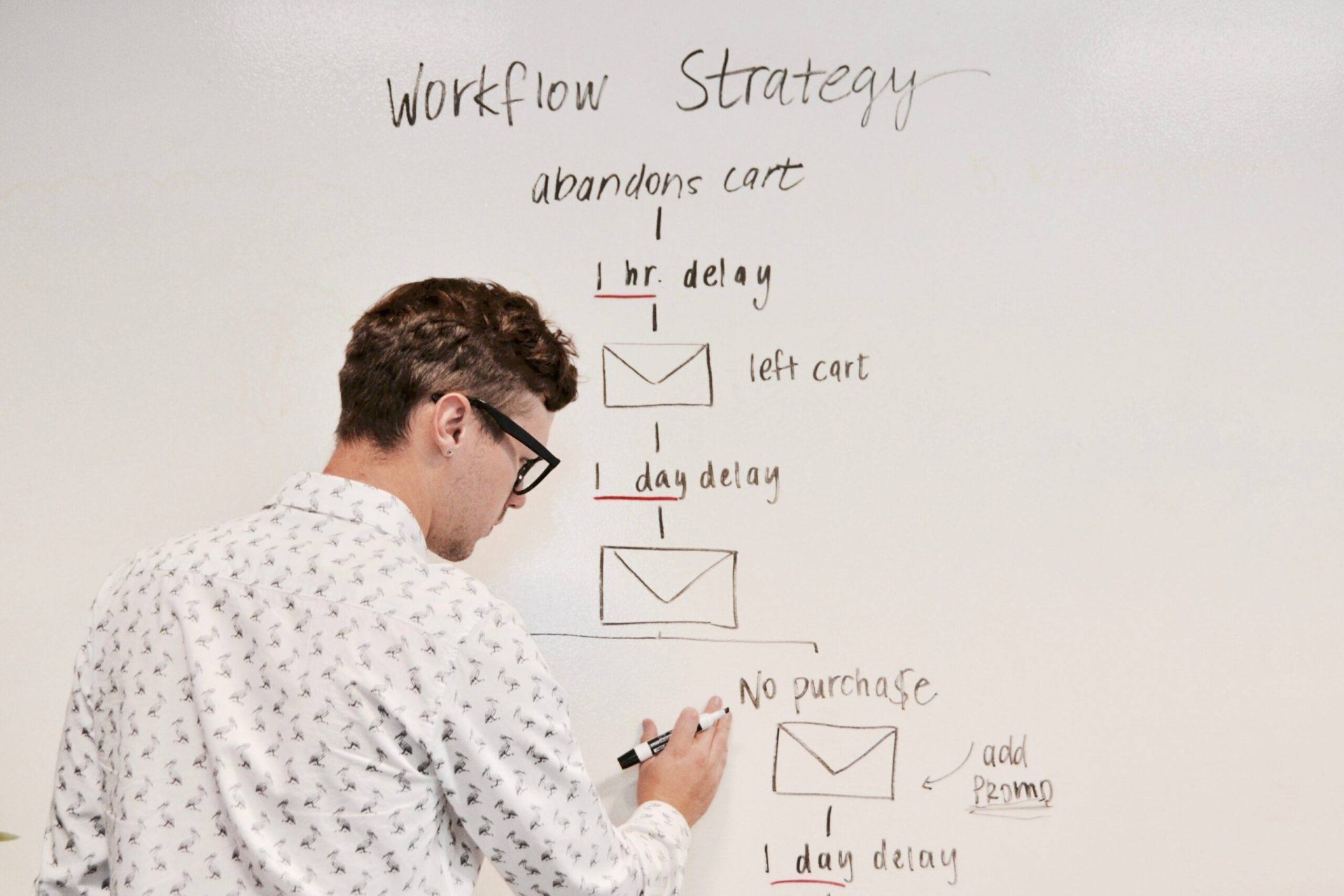The introduction of automation was a major breakthrough in the world of email marketing and enabled changes in communications sending. Until that time, the creation of each campaign was done and sent manually to contacts, following a one-shot pattern.
Thanks to this system, companies were able to establish more effective and efficient communication with customers by taking advantage of automatic message sending when certain conditions were met.
What’s email marketing automation?
Email marketing automation allows campaigns to be sent and scheduled through automatisms, that is rules that indicate specific actions to be taken when certain conditions occur.
Thanks to the collection of data of each contact, emails can be targeted based on, for example, biographical, behavioral, geographic or data regarding the relationship with the brand.
The first steps of email automation
To start taking your first steps into the world of automation, you need to know a few keywords that are often encountered in the use of this strategy.
Workflow is the first. It means a sequence of processes that characterize every email marketing campaign. Each workflow consists of messages, waiting times between messages, and trigger conditions for each.
Drip campaigns is a term used to denote simple workflows with emails characterized by the same layout and call-to-action. An example of a reactivation drip campaign might be:
- First email [Day 1]
Invitation to reactivate subscription
- Second email [Day 14]
Solicitation and coupon sending
- Third email [Day 30]
Last reminder and sending of coupon with larger discount

How to use automation
As mentioned earlier, automation allows contacts to be outlined according to many factors, such as interests or biographical data. This process starts when specific conditions that initiates the campaign occur.
Before starting any campaign, it is important to make sure that you are managing your database correctly. It is fundamental to be certain of the quality of the contact list you are communicating with, both from an engagement and a GDPR point of view.
Once you start the campaign, you build an automated email workflow by setting up specifications for the contacts. There can be both preset workflows based on the best practices of email marketing, but also customized workflows, so that we can best structure the communication flow according to the characteristics of our contacts.
To be able to act even more precisely, days and recurrences can be chosen to engage the user. For example, after a fixed time frame, if the user has not yet opened the email, you can choose to send a re-engagement message. Some of the moments when automated messages are most likely to be sent involve sign-ups, the purchase of a product or service, or registrations to any online activity.
At the end of the campaign, you should create a report that allows you to have an up-to-date situation regarding email performance so that you can improve your results.
An example of workflow
An example of this automation and workflow process could be:
- Sending a customized welcome email depending on the user’s characteristics and context.
- This is followed by a sequence of automated emails that start from the action that triggered the automation, for example, signing up for the newsletter.
- In this case, after a certain time frame, we remind the user to use the service and, based on the response, we proceed with a reminder for the expiration of the trial.
- We go on like this until we reach the final part of the workflow, where we find a user who is interested in the service and will therefore be part of the subscriber cluster.

Why use automation?
There are many advantages to using email marketing automation. But what are the most important ones?
First, this strategy allows you to send the right content to the right person, thanks to the profiling and personalization analyzed beforehand. This is crucial because it increases user engagement, but also because people and companies who use automation not only save time and are more efficient in sending communications, but they also manage to achieve a conversion rate about 53% higher (source: Aberdeen) than those who do not use it.
In addition to this, according to a study by Nucleus Research, automation brings a 14.5% increase in business productivity and a 12.2% reduction in marketing expenses, interesting data that should not be underestimated when using this strategy.
So, email marketing automation is a very useful method that enables the development of customer-oriented strategies through profiling, personalization and the subsequent sending of communications that are well targeted to the target audience. This way, you use the data you have on the user to improve the effectiveness of the campaign, which will be greater, as well as the performance of the email marketing strategy.







